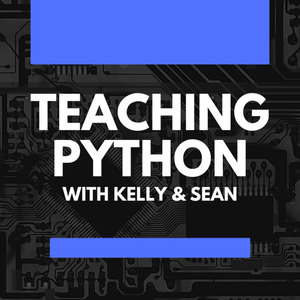How does a teacher plan for and design a curriculum that ensures the "click"?

The "click" is a magical moment that every teacher awaits. Sometimes referred to as the "a-ha moment," it is defined as the "moment of sudden realization, inspiration, insight, recognition, or comprehension."
It is a beautiful time when light bulbs come on, and learning happens. It is a moment most teachers anticipate and one we strive to repeat. For most teachers, predicting the exact time for every student's click is difficult, and ensuring success with all students, although desirable, sometimes impossible. However, if specific instructional techniques and learning paths are applied, one can devise a plan that can have a more substantiated success rate.
Every quarter, I tell students that computer science may seem like the most demanding and challenging class ever; however, it is not far out of reach. The hardest thing that they have to do is to "Trust the process." It is a lot to ask of 6th-grade students, but I believe so much in the process and work hard to improve upon it each learning rotation. From qualitative research and reflection, I have found that the' "click" typically happens in weeks four to six of the course.
Every student is different. Learning varies for all brains. Therefore, it has been challenging to identify the exact strategies and order that guarantee learning for all my students; however, a few techniques have proven beneficial to the learning process. These techniques and learning theories are relatively reliable, and using a combination of them helps ensure that learners can learn. The caveat is the word "learners," or those that want to learn.
Here are the top three strategies I use to promote learning in my computer science class:
Spacing, Repeating and Interleaving
My College Anatomy and Physiology teacher told us every day in class, the only way to learn is by “Repetition, repetition, repetition.” This concept stuck with me, not only because he said it with a solid Latino accent, but because he was right!
Learners must repeat items enough times for the neural connections to become "used" and fused. "Neurons that fire together, wire together." (Stevens, 2019) However, it is not enough to have rote learning and regurgitation over the same item day after day. Memorizing rote topics is a useful technique and does help learners retain vital vocabulary and concepts, but real learning does not happen outside of the context. Implementing a spiraling approach in the instruction, with both rote and contextual repetition mixed in, helps promote neural connections.
Space topics out throughout the course to allow a period of interleaving of new concepts. Every lesson becomes a different representation of the same subject as new concepts are weaved into the process and taught within a new context. The repetition of this process repeatedly throughout the course allows the brain to "mix up" related topics and gives the neurons time to rest. (Read more about interleaving here: The Scientific American)
A straightforward first dialogue repeated throughout the first 3-5 weeks is this type of conversation.
“What is this piece of code?
It is an object.
“What type of object is this?”
It is a string.
How do we know it is a string?
It is surrounded by quotes.
“Let’s apply a method to this object and assign this string to the variable name...”
The dialogue is trivial; it happens in the first two classes of computer science. However, I repeat this when teaching print statements, input functions, items in a list, dictionaries, methods on objects, and every time we see a string.
When teaching computer science, concepts appear in various situations but typically with the same patterns. Things that seem trivial to you may be the one thing that may deter retention for a student.
Showing topics in various contexts allows students to connect to many concepts, repeating these patterns in the brain, allowing neurons to wire together in multiple patterns. Find ways to interleave these concepts with different activities, graphing flow charts, reading articles on other topics, playing Minecraft, or completing a Gimkit or online quiz game.
Mental Images
Throughout the course, look for ways to help students make mental images with new vocabulary and knowledge. Dual coding theory, hypothesized in 1971, states that images and texts could help support the memory of new complex items. Although some doubt lies within this theory, many learning specialists confirm that using mental images to help learners understand topics is critical to advancing understanding.
Some studies show that a person that can “see” an image in their mind, learns two and half times faster than those that do not. Helping students visualize the complexities of what happens “behind the scenes” of everyday objects helps them make connections to code. (Read more about mental images in learning here: Using Mental Imagery)
When coding, the use of only words and conversation tends to be the norm. Find ways to “draw” the concepts out on the whiteboard. Making graphs, sketches, or using physical components while teaching helps students “see” the code clearer in their minds.
One simple example is the explanation of inputs and outputs. Students are instructed to think about an electronic object in their home that requires them to “do” something in return for something happening. Students tend to visualize a remote or perhaps their Alexa or even their computer login. Have students sketch out the flow chart for this activity, assigning an input, decision branch, and output. The flowchart can have structure and correct form or allow students to draw the chart so that it makes sense to them. This simple activity leads us into many opportunities to discuss input functions, buttons, sensors, and conditional statements.
Desireable Difficulties
It is natural to learn from opportunities that challenge us. Desired Difficulties in learning are opportunities designed to be more difficult than average and should take longer than usual to solve. These activities require thought and often challenge the brain to access both long and short-term memory.
The hardest part of using desirable difficulties in class is trusting the process. Most teachers and students want the learning to be more comfortable and take a shorter amount of time. However, when learning is hard, more errors and mistakes happen. Students can become frustrated that they are confused, or feelings of lack of abilities can happen. However, Dr. Robert Bjork and Dr. Elizabeth Bjork propose that learning occurs when there is a struggle to solve and slow down the learning process. What may appear as students not learning promptly or being successful is the opposite.
Learning that
a) requires time to process,
b) accesses different parts of the brain, and
c) promotes thinking differently about a solution,
creates different learning pathways and long-term retention of knowledge for all learners.
(Read more about desirable difficulties here: Desirable Difficulties in the Classroom)
Every week I try to provide opportunities for students to process and challenge their minds. There are many opportunities for this to happen in a computer science class. One way is to incorporate what I use to dub “5-minute challenges”. These weekly challenges are short coding problems designed to reinforce learning but are new and slightly different from what students have already seen.
Initially, I limited the amount of time on “5-minute challenges” as not to “waste” opportunities for class instruction; however, now, students are given more time to process and work through the solution. Moreover, learning opportunities are not wasted, even though more class time is used. The challenges are often complicated, but most students can solve them when given time to process and seek the solution.
"If I, as a teacher could get a student to generate an answer rather than my giving it to them, they'll remember it much better later on, but they have to be able to generate it by virtue of what they know already and the cues the instructor would give them. They have to succeed at the generation." - Dr. Robert Bjork
The best part of these challenges is that solutions can vary, thus providing opportunities for class discussions afterward and the thought process on how the problems were solved is shared.
Many learning theories have proven to help learn how to learn. Using a combination of them throughout a course can help to improve click moments for all students. To find out more, look into cognitive science strategies in learning.
Have fun reading and trust the process.
Resources
“‘Desirable Difficulties’ Can Lead to Deeper Learning and Better Retention.” "Desirable Difficulties" Can Lead to Deeper Learning and Better Retention | Tomorrow's Professor Postings, tomprof.stanford.edu/posting/1419.
Conyers, Donna Wilson and Marcus. “Brain Movies: When Readers Can Picture It, They Understand It.” Edutopia, George Lucas Educational Foundation, 13 May 2014, www.edutopia.org/blog/brain-movies-visualize-reading-comprehension-donna-wilson.
“Neurons.” How Do I Learn, www.washington.edu/howdoilearn/neurons/.
Pan, Steven C. “The Interleaving Effect: Mixing It Up Boosts Learning.” Scientific American, Scientific American, 4 Aug. 2015, www.scientificamerican.com/article/the-interleaving-effect-mixing-it-up-boosts-learning/#:~:text=Instead, your brain must continuously, that interleaving strengthens memory associations.
Stevens, Alison Pearce. “Learning Rewires the Brain.” Science News for Students, 3 Dec. 2019, www.sciencenewsforstudents.org/article/learning-rewires-brain.
Sumeracki, Megan. “Learn How To Study Using... Dual Coding.” The Learning Scientists, The Learning Scientists, 1 Sept. 2016, www.learningscientists.org/blog/2016/9/1-1.
“UCLA.” Bjork Learning and Forgetting Lab, bjorklab.psych.ucla.edu/research/.
“Using Mental Imagery Processes for Teaching and Research in Mathematics and Computer Science.” International Journal of Mathematical Education in Science and Technology, Vol. 00, No. 00, 15 July 2009, 1–13
